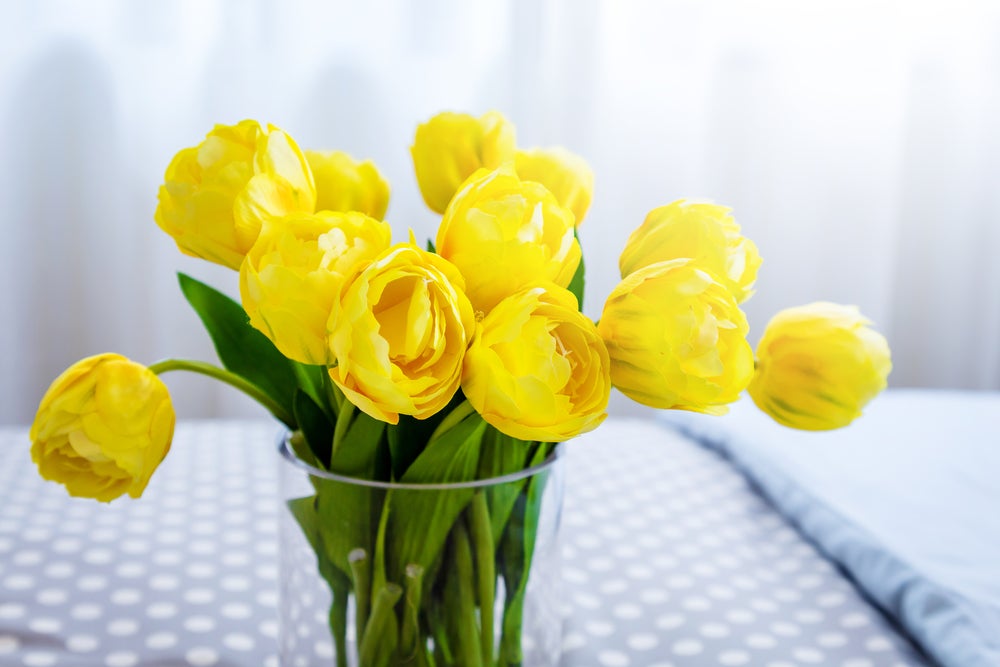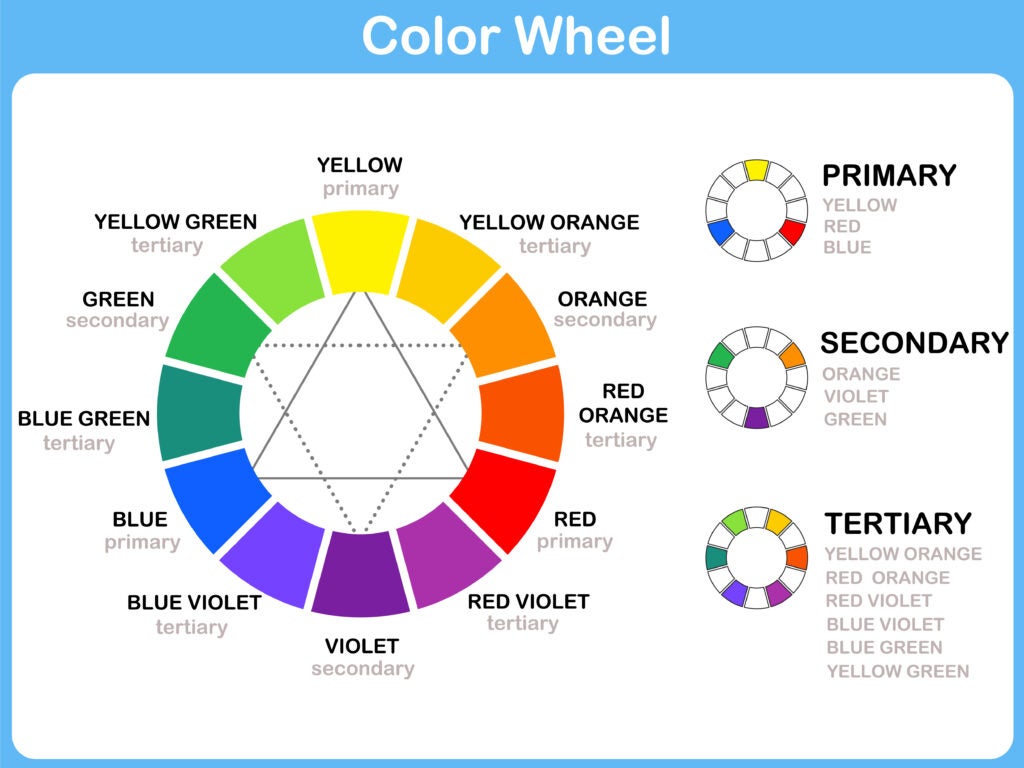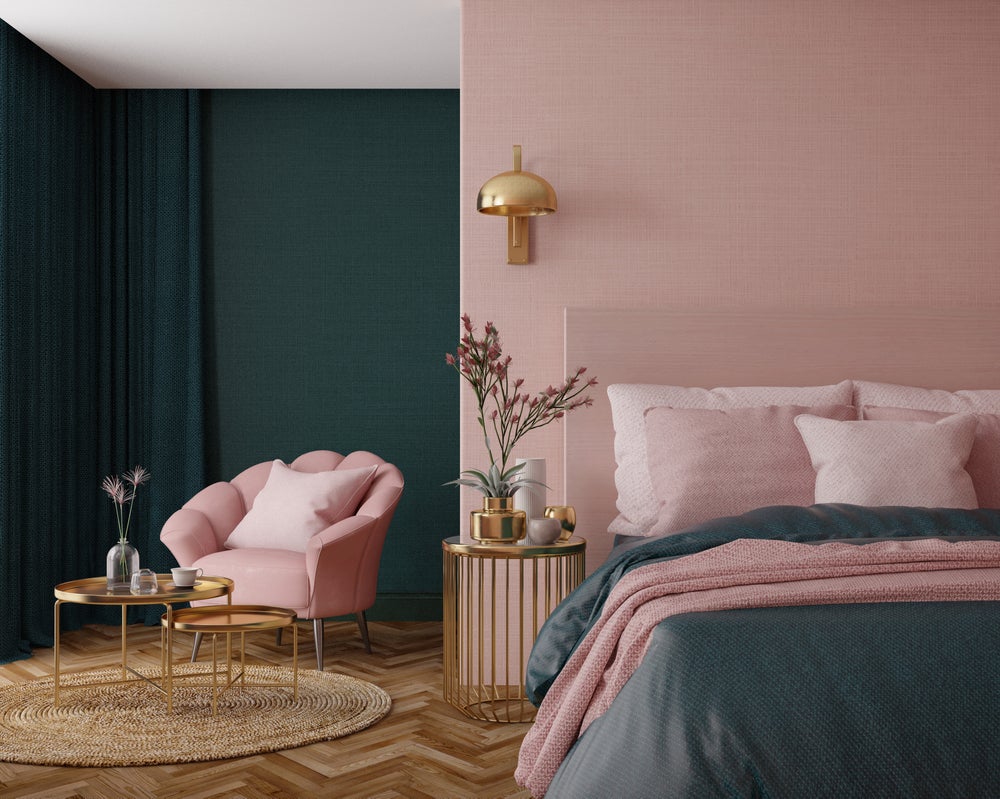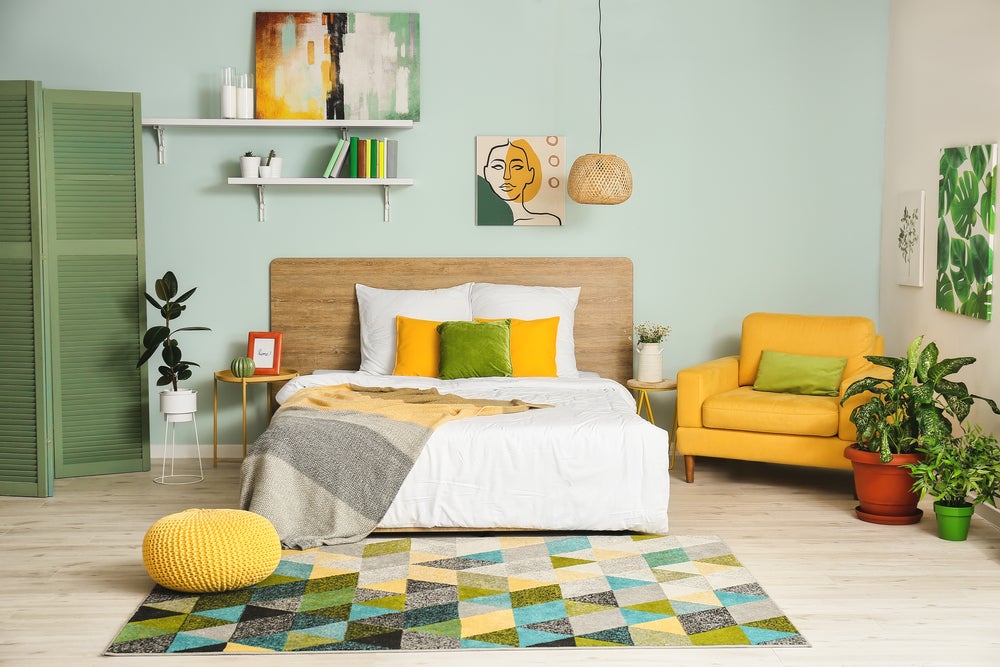When Kermit the Frog sang “It’s not easy being green,” he wasn’t referring to accent colors. That said, if you listen to the lyrics of the Muppet-friendly song, you’ll find the answer to the dilemma of colors that complement green.
As Kermit so eloquently put it, green is the color of leaves. Green isn’t fancy, and green doesn’t sparkle, but green is the color of spring. It’s also the color many people associate with nature, the environment, trees, and grass, and mountains.
There are so many colors that with green, but it depends on the shade you’re working with. There’s emerald green, mint green, ocean green, Kelly green, and the list goes on. There’s no denying that green is a versatile color. “Green as grass,” as the popular saying goes. And “the grass is always greener.”
What is an accent color?
An accent color is used to highlight or accentuate a scheme of colors. In this case, green color schemes. If you are wearing a black dress to a party and want to liven up the outfit, you can accent the dress with a gold necklace, diamond earrings, or a pair of red shoes. Essentially, what you are doing is adding color to make your outfit pop.
You can take the same approach to home décor with shades of green colors.
Consider the grass mentioned above. Imagine the grass to be green, and well maintained – a manicured, healthy, backyard lawn. Chairs are strategically placed around the lawn – red and yellow and orange chairs creating pops of color against a green background.
Nature’s Own
Fall photographs are often stunningly beautiful because of the accent colors – striking reds, delightful oranges, and golden yellows against a background of green trees will stand out. It’s a color palette that can easily be moved from the great outdoors to inside your house, apartment, cabin, or other living space.
You can easily add accent colors that will make a living space a reflection of your passion for fashion.
If fashion isn’t your thing, you can use accent colors to convince family and friends that you do know how to decorate a room!
So, What Color Goes with Green?
Accent colors should be used to create interest. The goal is to use different colors to brighten a somber color.
Can I use more than one accent color?
You can, but here’s a suggestion: Be careful that you don’t overdo it. You want to create interest and not mayhem. Adding color in a room will make it more interesting; too much color may make it look chaotic.
How do I choose an accent color?
A good place to start is with a color wheel.
Green is a secondary color, a combination of the two primary colors blue and yellow. Secondary colors always match the colors that make them.
Analogous colors will create a harmonious effect in your living space and are located next to each other on the color wheel. Green, yellow-green and yellow are analogous colors, and so are green, blue-green, and blue.
You can also mix and match green walls with yellow, red, and/or orange accent colors.
Complementary colors are located on opposite sides of the color wheel. Corresponding secondary colors are green, orange, and violet or purple.
Color experts suggest choosing a complementary color scheme by using primary colors in muted shades.
What colors should I use with green?
Green is said to be one of the easiest dominant colors to work with.
The colors you choose to accent green will also depend on personal preference.
Choose variations of the color, green.
- Green also works with blue, purple, and violet accents.
- Think Pink!
- Pink will work with green, and it might be one previously unconsidered color.
- Consider Earth tones – browns and yellows.
- Blue, orange, purple and brown all go well with the color green.
- Choose shades of the dominant color.
- Select shades of red, yellow, blue, and brown.
Create a unique look by choosing fabrics with interesting patterns, and in a variety of accent colors.
What if you are looking for colors to accent light green?
- Look at colors directly opposite each other on the color wheel
- Consider shades of purple
- Violet
- Lavender
- Fuchsia
- Magenta
- Grape
Showcasing your accent colors
To create a unique look, consider choosing from the wide variety of items available and accessorize, accessorize, accessorize.
The items you choose don’t have to be expensive. You can find decorative and ornamental objects in just about every store and fit any budget. The key is keeping your choices within what you can afford.
Think about selecting all or some of the following items in accent colors:
- Throw cushions
- Vases
- Photo frames
- Throw blankets
- Light fixtures
You may want to read: Blackout Curtains in Green
Conclusion
Whether it’s for a living area, office space, cabin, or backyard lawn, the sky’s the limit when adding color to your world.
Accent colors are used by professional and non-professional decorators to highlight, accentuate, and create interest.
When choosing accent colors that will work with green, your best bet to getting started is to look at the color wheel. Use a color wheel to figure out which colors will work best for you.
Our research determined that green is one of the easiest dominant colors to work with.
Accent colors that work well with green are yellow, red and orange; blue, purple, violet and pink.
Accessories are a great way to accentuate a living room or any other area in your home. Select accessories in accent colors that meet your budget.
There are many products on the market today so choose carefully, and according to what you can afford.
Here are some points to think about as you choose accent colors to complement the color, green:
- What is your decorating style?
- What are your color preferences?
- What is your budget?
- Do you prefer functional or decorative items?
- Talk to experts, family, and friends who have an eye for mixing and matching colors.
- Use online forums or chat rooms for advice on color options.
- Read reviews.
- Check out websites that offer advice on accent colors.
Please comment below if there are any questions or recommendations.
Photo credit: lilasgh/Shutterstock; WHYFRAME/Shutterstock; aekikuis/Shutterstock; ninoon/Shutterstock; Pixel-Shot/Shutterstock
Frequently Asked Questions
What rooms are best to paint green?
Since the color green represents harmony and renewal, the bedroom is your best bet, especially if you stick to lighter shades to create a relaxing atmosphere. That being said, almost any room in your home can be painted green. Darker hues work well in a living room, dining room or office, while a more muted green paired with white cabinets is a great combination in a kitchen. Sea foam, aqua or a turquoise all have hints of blue undertones mixed with the green and can be used as an accent wall or on all walls, as they are happy, joyous colors that work well in a kid’s room.
Which accent colors don’t go well with green?
Green, with its range of shades and hues, matches well with most colors. However, two colors that are the least recommended to combine with green are orange and red. This is because the general rule, according to color experts, is not to wear or use together colors that are opposite each other on the color wheel. Red and orange both sit across from all the glorious shades of green. However, rules are made to be broken and frankly, red and green really pair nicely in many situations, so if this color combo or green and orange rock your soul, then use them proudly.
What is an accent color?
An accent color is used to highlight or accentuate a specific color palette. With a green color scheme, say you decide to paint three of your living room walls a soft, creamy ivory, and one wall a rich, deep green jewel tone. This would be your accent wall to add a pop of color and life into what would otherwise be a neutral space. Other “accents” could include accessories in green such as lamps, pillows or an area rug. In a kitchen, cooler shades of green, such as mint or pistachio, would work well, and you could use white and light wood accents to tie it together.
Can I use green as an accent color for green?
There are so many shades of green that exist in nature, from soft, subtle barely-there hints of sage to strong forest hues and deep jewel tones. Because of this, green makes an excellent accent color to use with itself, allowing you to combine several shades of green into a room to create a layered look. The different greens will work well together, and if you feel like shifting away from a completely monochromatic color palette, you can add one or two other colors such as blue, lavender, rose or yellow as accents.



